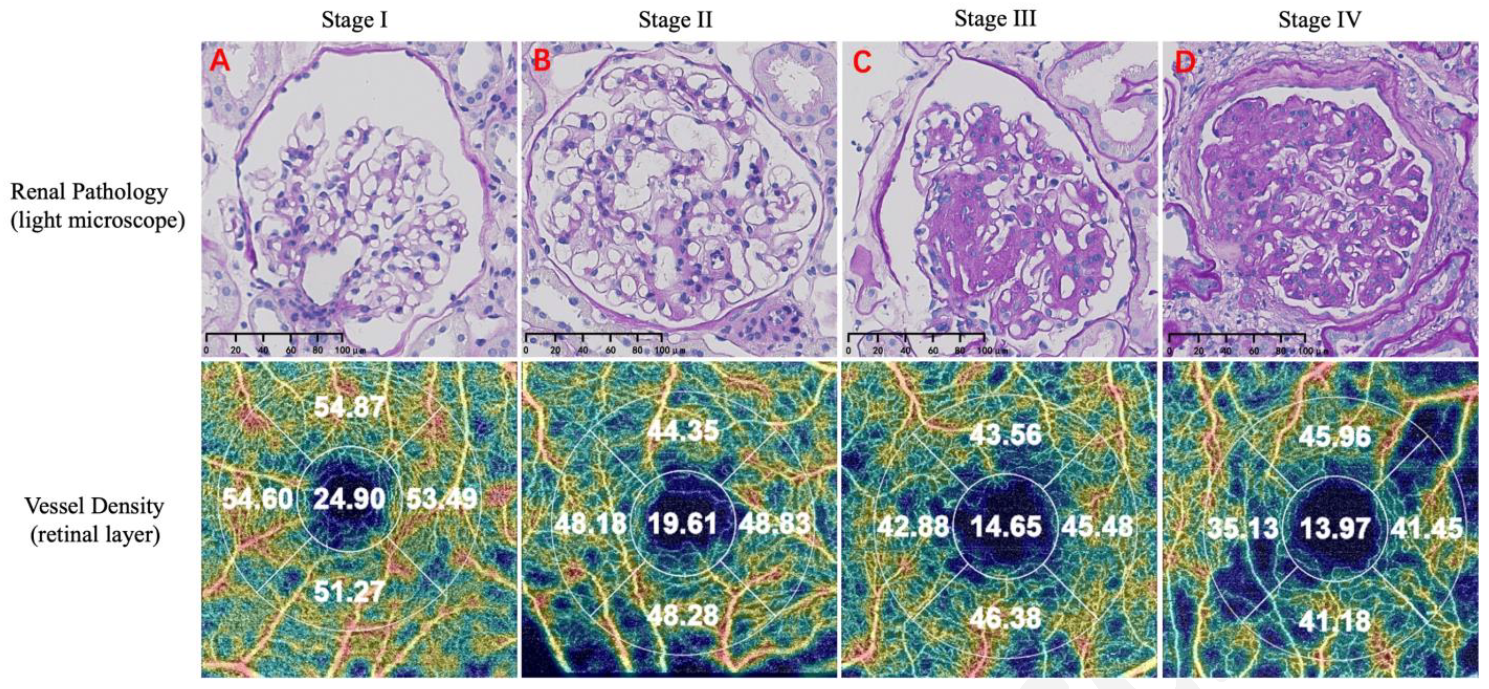Early diagnosis of diabetic kidney disease (DKD) is key for improving quality of life and for reducing the risk of end-stage kidney disease. In a paper recently published in the journal Ophthalmic Research, experts say that examining fundus blood flow may provide clues to DKD activity and serve as a noninvasive alternative to renal biopsy for monitoring early changes.
 |
| By quantifying the retinal capillary network, OCT-A can detect early microvascular disease and serve as a predictor for kidney function. Photo: Zhao y, et al. Ophthalmic Res 2024. Click image to enlarge. |
The researchers gathered data from 157 patients with type 2 diabetes who’d had renal pathology biopsies and OCT-A exams (157 eyes). Other data included renal function, 24-hour urine protein quantification and macular flow imaging. The researchers graded diabetic kidney disease biopsy findings and categorized them into early (stage 1) and late (stages 2 to 4). These biopsies were used to group fundus flow parameters.
The researchers reported that patients’ urinary microalbumin to urinary creatinine ratio increased with pathological grading, while the glomerular filtration rate decreased. They also noted that retinal blood flow in the superficial, deep and full paracentral rings was decreased, which correlated with pathological grading. Blood flow density was highest in the whole layer.
The statistical model the researchers created for early diabetic kidney disease showed that whole-layer blood flow density, urinary microalbumin to urinary creatinine ratio and diabetes duration were statistically significant.
“Macular retinal blood flow density detected by noninvasive OCT-A in patients with type 2 diabetes mellitus exhibited a strong correlation with the grading of DKD pathological severity which decreases as the grading increases,” the researchers concluded in their Ophthalmic Research article.
“The entire retina has a good discriminatory ability between the early and late stages of DKD pathology, and may be an important reference index to assist or reduce the number of renal pathological biopsies in patients with diabetes mellitus,” they wrote.
| Click here for journal source. |
Zhao y, Zhou C, Tang Y, et al. The retinal blood flow density is related to the pathological severity of diabetic kidney disease. Ophthalmic Res 2024. [Epub ahead of print]. |


